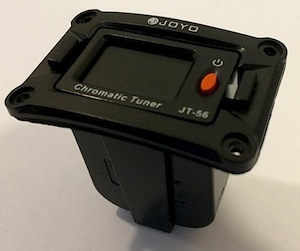- Joined
- Jul 16, 2014
- Messages
- 2,014
- Reaction score
- 767
I have several electronic tuners of two brands. I have several different Snarks, and several O'ahu tuners. I like the visual indications on the Snarks which are bright and colorful. I can "see" the increasing/decreasing pitch more directly on the Snarks. But the O'ahu tuners seem to center, or lock onto the correct pitch more positively. I have noticed that the O'ahu tuners go deaf more often, and sometimes seem to momentarily stick on an indication, then jump to a new setting. But both tuners do about the same job when it comes to getting a proper tuning. That is, neither is dead on all the time. I think that must be because the tuners hear a range of pitch, and will signal an exact pitch when the actual pitch is within that range. So using the tuner you might get one string tuned toward the upper part of that range, and another toward the bottom, resulting in a noticeable difference between the two strings. I find tuning much more enjoyable and accurate using the tuners than not using them. But I'm left wondering what using a highly accurate and sensitive tuner would be like.

